Five Hidden Dangers in Your Home
This article explores five common hazards that may be lurking in your home, providing insights on how to identify and mitigate these risks to ensure a safer living environment for you and your family. It’s easy to overlook dangers that are right under our noses, but being aware of them can make a world of difference. Let’s dive into these hidden threats and learn how to keep our homes safe and sound!
Toxic mold can grow in damp areas of your home, posing serious health risks. You might find it lurking in your bathroom, basement, or anywhere there’s moisture. Mold spores can trigger allergies, respiratory issues, and even more severe health problems. Understanding its causes—like leaks, high humidity, or poor ventilation—can help you take proactive steps to eliminate and prevent mold growth. If you notice a musty smell or see discoloration on walls, it’s time to act! Regularly check your home for signs of moisture and ensure proper ventilation in all areas.
Carbon monoxide (CO) is a colorless, odorless gas that can be deadly. It’s produced by burning fossil fuels, and common sources include gas stoves, heaters, and even your car if it’s running in an enclosed space. Recognizing the sources and symptoms of CO poisoning—such as headaches, dizziness, and confusion—is crucial for keeping your household safe. Installing a carbon monoxide detector on each level of your home can be a lifesaver. Check the batteries regularly and make sure the detectors are functioning properly. Remember, it’s better to be safe than sorry!
Many common household products contain harmful chemicals that can lead to poisoning or respiratory issues. Everything from cleaning supplies to air fresheners can contribute to indoor air pollution. Learning how to safely store and use these products is essential for protecting your family’s health. Always read labels, keep chemicals out of reach of children, and opt for natural alternatives when possible. Consider creating a designated storage area for hazardous materials and ensure it’s clearly labeled and secured. Your family will thank you for it!
Faulty wiring and overloaded circuits can create serious fire risks in your home. Understanding electrical safety and recognizing warning signs—like flickering lights or frequently tripped breakers—can prevent accidents and ensure your home remains safe. If you notice any of these issues, it’s wise to consult a professional electrician. Additionally, you can take preventive measures by not overloading outlets and replacing frayed cords. Keeping your electrical systems in check is a crucial step in maintaining a safe living environment.
Indoor air pollution can arise from various sources, leading to respiratory issues and allergies. Factors like dust, pet dander, and even mold can contribute to poor air quality. Identifying the causes and improving air quality can enhance your family’s overall health and comfort. Regularly changing air filters, using air purifiers, and keeping your home clean can make a significant difference. Consider creating a cleaning schedule that includes dusting and vacuuming to keep allergens at bay. Your lungs will thank you!
Q: How can I tell if I have toxic mold in my home?
A: Look for discolored patches on walls or ceilings and pay attention to musty odors. If you suspect mold, it’s best to have a professional inspection.
Q: What are the symptoms of carbon monoxide poisoning?
A: Symptoms include headaches, dizziness, weakness, nausea, and confusion. If you experience these symptoms, get to fresh air immediately and call for help.
Q: Are natural cleaning products effective?
A: Yes! Many natural cleaning products can be just as effective as chemical ones. Vinegar, baking soda, and lemon juice are great alternatives for cleaning.
Q: How often should I check my smoke and carbon monoxide detectors?
A: It’s recommended to check them monthly and replace batteries at least once a year. Also, replace the detectors every 5-10 years.
Q: What can I do to improve indoor air quality?
A: Regular cleaning, using air purifiers, and ensuring proper ventilation can significantly improve indoor air quality. Also, consider using houseplants that purify air!
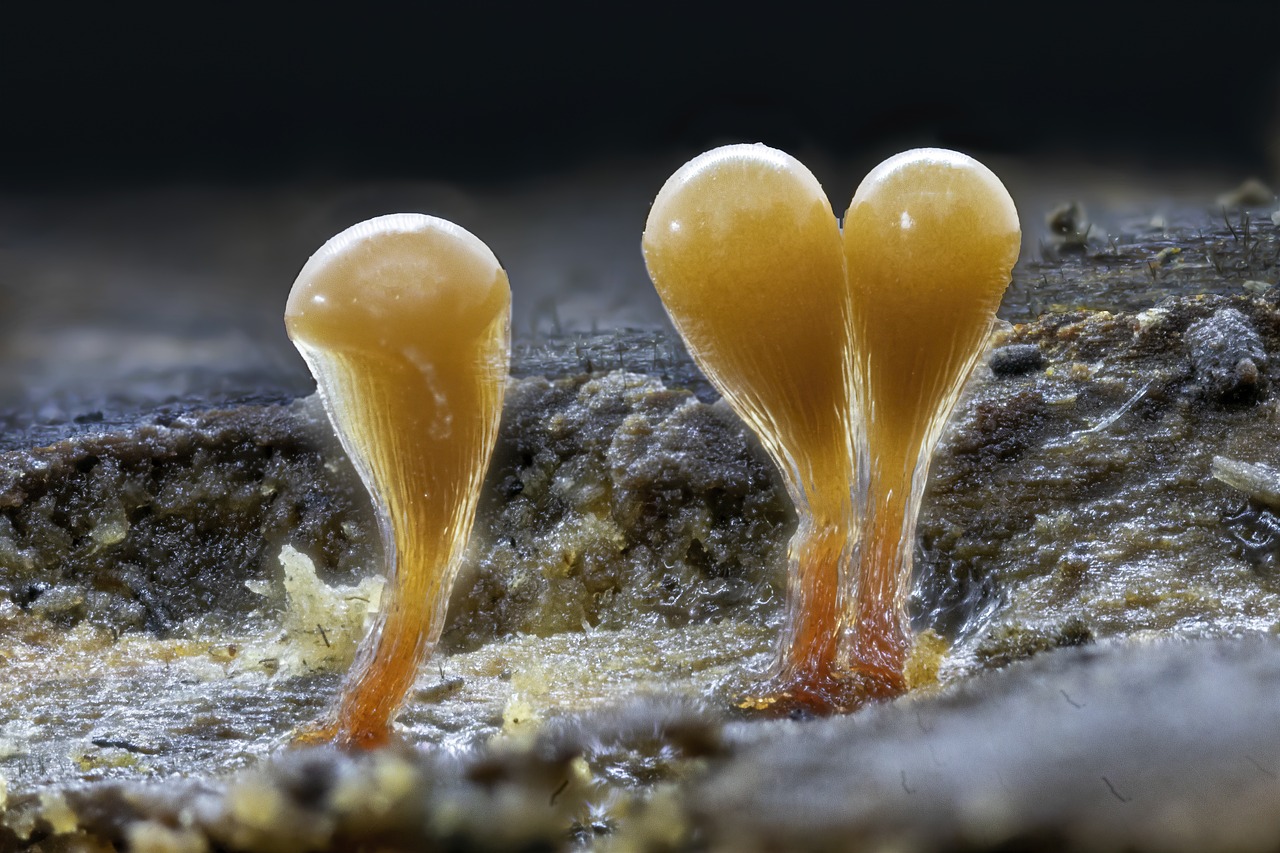
1. Toxic Mold
This article explores five common hazards that may be lurking in your home, providing insights on how to identify and mitigate these risks to ensure a safer living environment for you and your family.
Toxic mold is more than just an unsightly blemish on your walls; it can be a serious health hazard that thrives in damp, dark corners of your home. Imagine stepping into a room and being greeted by a musty smell that makes your nose twitch. That’s often the first sign of mold, and it’s crucial to take it seriously. Mold can cause a range of health issues, from mild allergies to severe respiratory problems, particularly for those with asthma or weakened immune systems. It’s like a silent intruder, creeping in and wreaking havoc on your health without you even knowing it!
So, what causes this pesky mold to grow? The answer lies in moisture. Areas of your home that are prone to dampness, such as basements, bathrooms, and kitchens, are prime real estate for mold spores. These spores can multiply rapidly when conditions are right, leading to larger colonies that can become difficult to manage. The key to prevention is understanding the symptoms and taking proactive measures. Look for signs of mold growth such as:
- Visible mold patches (often black, green, or white)
- Water stains on walls or ceilings
- Increased allergy symptoms, like sneezing or coughing
To combat toxic mold, regular maintenance is essential. Start by ensuring proper ventilation in high-moisture areas. Use exhaust fans in bathrooms and kitchens to help reduce humidity. If you spot any leaks, whether from a pipe or a roof, address them immediately. Additionally, consider using a dehumidifier in areas that tend to retain moisture. Keeping indoor humidity levels below 50% can significantly reduce the chances of mold growth.
In cases where mold has already taken hold, it’s important to act swiftly. Small patches can often be cleaned with a mixture of water and detergent, but larger infestations may require professional help. Remember, safety first! Always wear protective gear, such as gloves and masks, when dealing with mold to prevent exposure to harmful spores.
In conclusion, being aware of the dangers posed by toxic mold is the first step in keeping your home safe. Regular inspections, prompt repairs, and maintaining a dry environment can help you keep this hidden danger at bay. After all, your home should be a sanctuary, not a source of health risks!
Q: How can I tell if I have toxic mold in my home?
A: Look for visible mold patches, water stains, and pay attention to any unusual musty odors. If you or your family members are experiencing unexplained allergy symptoms, it might also be a sign.
Q: Can I remove mold myself?
A: For small areas, you can clean mold with soap and water or a mixture of vinegar and water. However, for larger infestations, it’s best to consult a professional to ensure safe removal.
Q: What are the health risks associated with mold exposure?
A: Mold exposure can lead to respiratory issues, allergic reactions, and in severe cases, toxic mold syndrome, which can affect the nervous system and overall health.
Q: How can I prevent mold from growing in my home?
A: Maintain low humidity levels, ensure proper ventilation, fix any leaks promptly, and regularly clean areas prone to moisture.

2. Carbon Monoxide Poisoning
Carbon monoxide (CO) poisoning is often referred to as the "silent killer," and for good reason. This colorless, odorless, and tasteless gas can seep into your home without you even realizing it, creating a hazardous situation for you and your loved ones. It’s produced when fuels such as gas, oil, coal, or wood are burned. Think of it as a stealthy intruder, quietly making its way into your living space, ready to wreak havoc on your health.
One of the most alarming aspects of carbon monoxide is that it can accumulate in enclosed spaces, particularly if appliances are not functioning properly. For instance, a malfunctioning furnace or a blocked chimney can lead to dangerous levels of CO. It’s essential to be aware of the common sources of carbon monoxide in your home:
- Gas stoves and ovens
- Furnaces and boilers
- Water heaters
- Generators
- Fireplaces
Recognizing the symptoms of CO poisoning can be a matter of life and death. Early signs often mimic those of the flu, which can lead to misdiagnosis. Symptoms to watch for include:
- Headaches
- Dizziness
- Nausea
- Shortness of breath
- Confusion
If you or anyone in your household experiences these symptoms while indoors, it’s crucial to evacuate the premises immediately and seek fresh air. After ensuring everyone is safe, call emergency services to investigate the source of the CO.
To protect your family from the dangers of carbon monoxide, consider the following preventive measures:
- Install CO detectors: Place these devices near sleeping areas and on every level of your home. Test them monthly to ensure they are working properly.
- Regular maintenance: Have your heating systems, water heaters, and any other gas or oil appliances serviced annually by a qualified technician.
- Ventilation: Ensure that your home is well-ventilated, especially when using fuel-burning appliances. Open windows or doors to allow fresh air to circulate.
In conclusion, carbon monoxide poisoning is a serious risk that can easily be overlooked in the comfort of your home. By being proactive and implementing safety measures, you can significantly reduce the chances of CO buildup and ensure a safer living environment for you and your family.
What should I do if my CO detector goes off?
If your CO detector sounds an alarm, immediately evacuate everyone from the home and call emergency services. Do not re-enter until it has been deemed safe.
How often should I replace my CO detector?
CO detectors should be replaced every 5 to 7 years, depending on the manufacturer's guidelines. Regularly check the expiration date on your device.
Can I use a gas stove or oven for heating?
No, using a gas stove or oven for heating can produce dangerous levels of carbon monoxide. Always use heating appliances as intended.
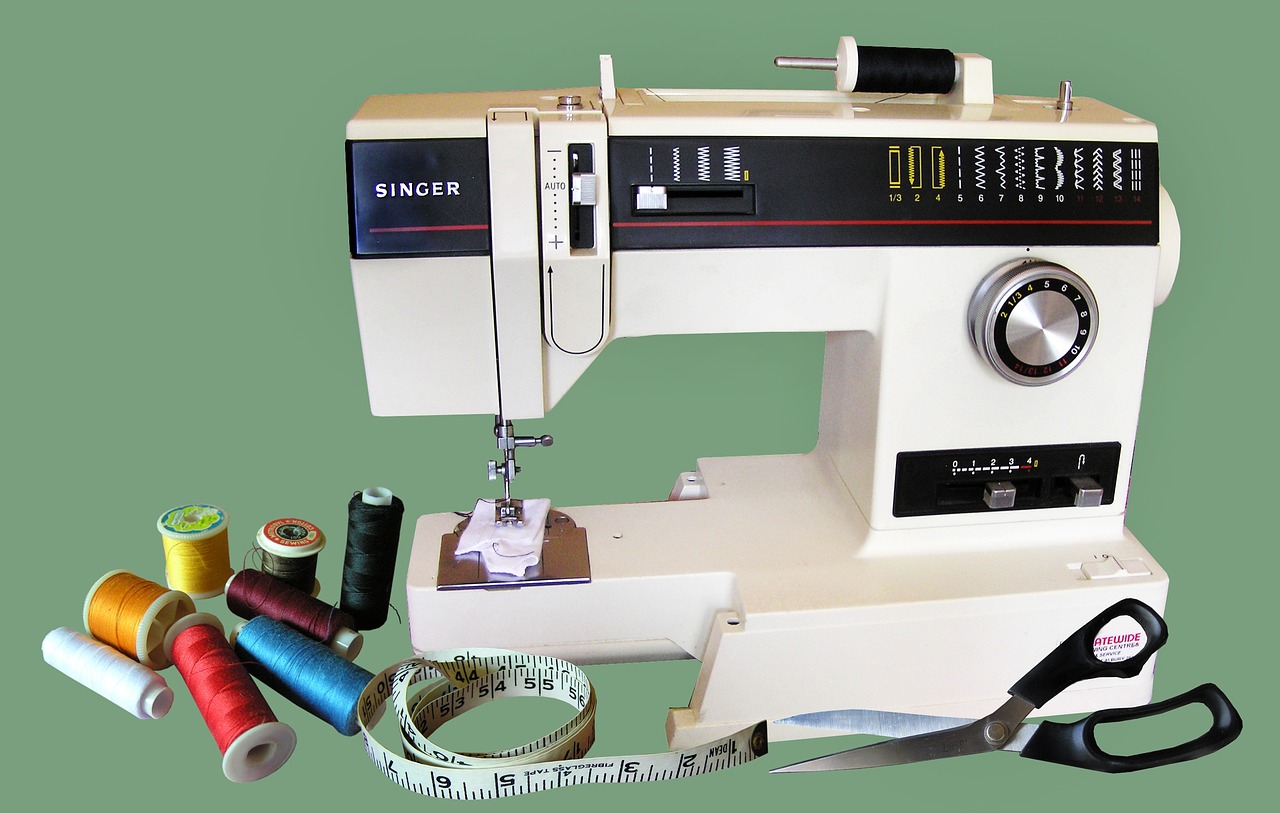
3. Household Chemicals
Household chemicals are a part of everyday life, lurking in cabinets and under sinks, ready to tackle grime and dirt. However, many of these products contain harmful substances that can lead to serious health issues if not handled properly. From cleaning supplies to personal care items, the risk is often underestimated. Did you know that some common household cleaners can release toxic fumes that irritate the lungs and skin? It's crucial to be aware of what you're using and how to use it safely.
For instance, products containing ammonia or bleach can create dangerous reactions when mixed. It’s like a science experiment gone wrong! Imagine pouring these two together, and suddenly, you’re enveloped in a cloud of toxic gas. Not exactly the fresh scent you were hoping for, right? This is why it’s essential to read labels carefully and understand the ingredients in your cleaning arsenal.
To safeguard your family, consider the following tips for managing household chemicals:
- Store Safely: Keep chemicals out of reach of children and pets. Use child-proof locks on cabinets if necessary.
- Ventilation is Key: Always ensure that the area is well-ventilated when using strong chemicals. Open windows or turn on fans to circulate air.
- Follow Instructions: Always adhere to the usage instructions on the label. This includes dilution ratios and recommended protective gear.
Furthermore, many households are unaware that even seemingly harmless products can have adverse effects. For example, air fresheners, fabric softeners, and even some personal care items can contain volatile organic compounds (VOCs) which contribute to indoor air pollution. It’s like inviting a hidden guest into your home who brings along allergens and irritants. The more you know, the better you can protect your home environment.
To help you navigate the world of household chemicals, here’s a quick comparison table of common products and their potential risks:
| Product Type | Common Ingredients | Health Risks |
|---|---|---|
| All-Purpose Cleaners | Ammonia, Sodium Hypochlorite | Respiratory issues, skin irritation |
| Air Fresheners | Fragrance, VOCs | Allergies, asthma exacerbation |
| Drain Cleaners | Caustic Soda, Sulfuric Acid | Chemical burns, respiratory distress |
| Pesticides | Pyrethroids, Organophosphates | Nausea, neurological effects |
In conclusion, being proactive about household chemicals is not just about keeping your home clean; it’s about ensuring a safe environment for you and your loved ones. By understanding the risks associated with these products and implementing safety measures, you can significantly reduce the chance of accidents and health issues. Remember, knowledge is power, and in this case, it can also be the key to a healthier home!
Q: What should I do if I accidentally mix cleaning products?
A: If you accidentally mix cleaning products and produce a harmful reaction, evacuate the area immediately and ventilate the space. If symptoms arise, seek medical help.
Q: Are there safer alternatives to traditional household chemicals?
A: Yes, many natural alternatives can effectively clean your home, such as vinegar, baking soda, and lemon juice. These options are not only safer but also eco-friendly.
Q: How can I tell if a product contains harmful chemicals?
A: Always read the labels on household products. Look for warning signs such as “toxic,” “flammable,” or “corrosive,” and research unfamiliar ingredients online for more information.
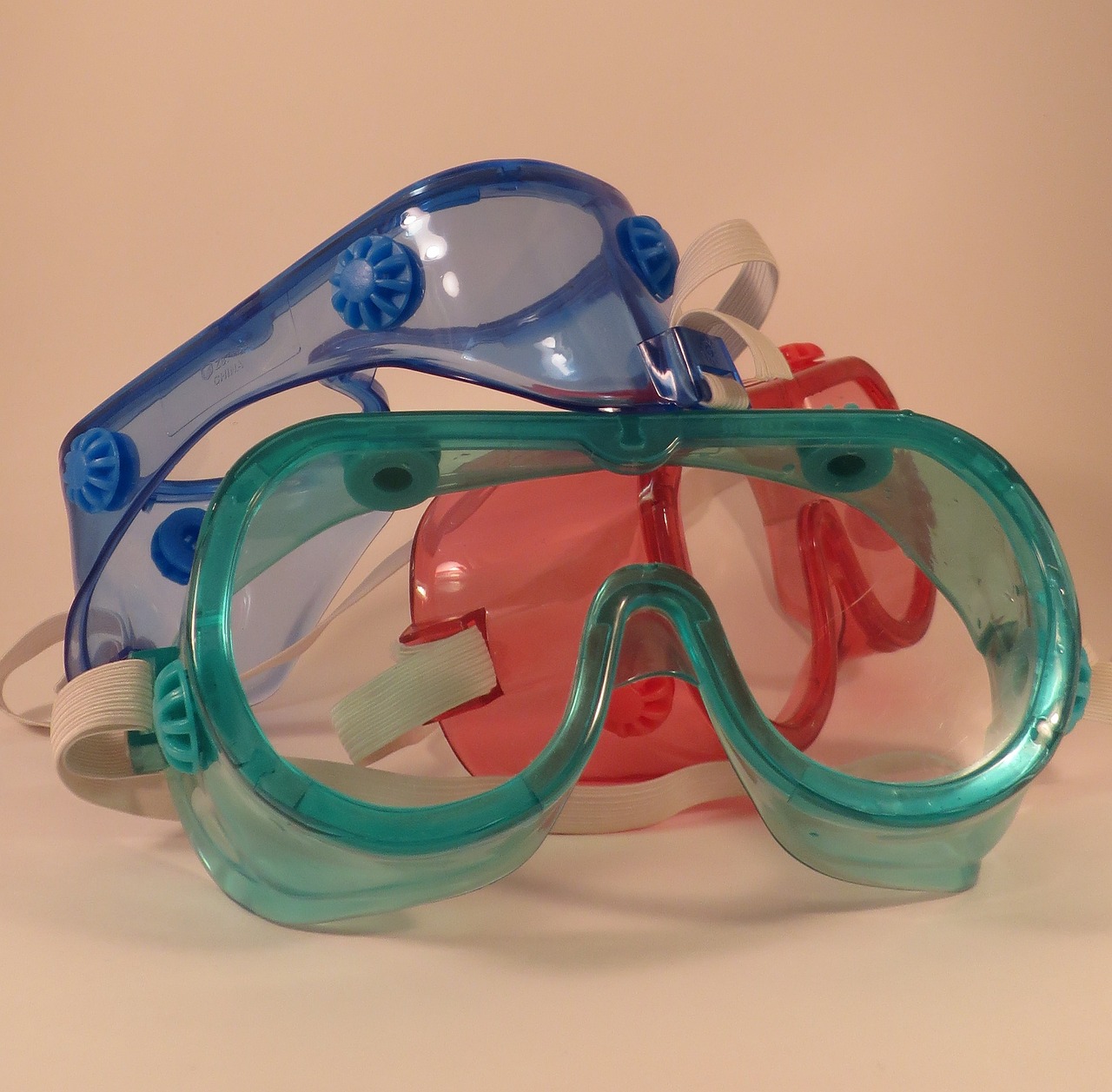
4. Electrical Hazards
This article explores five common hazards that may be lurking in your home, providing insights on how to identify and mitigate these risks to ensure a safer living environment for you and your family.
Toxic mold can grow in damp areas of your home, posing serious health risks. Understanding its causes and symptoms can help you take proactive steps to eliminate and prevent mold growth.
Carbon monoxide is a colorless, odorless gas that can be deadly. Recognizing the sources and symptoms of CO poisoning is crucial for keeping your household safe and ensuring proper ventilation.
Many common household products contain harmful chemicals that can lead to poisoning or respiratory issues. Learning how to safely store and use these products is essential for protecting your family’s health.
Electrical hazards are often silent dangers that can escalate into catastrophic incidents if left unchecked. It’s easy to overlook the wiring behind your walls or the extension cords sprawled across your living room, but these seemingly minor oversights can lead to serious consequences. For instance, did you know that faulty wiring is one of the leading causes of house fires? It’s true! Understanding the risks associated with electrical systems in your home is crucial for maintaining safety.
One common issue arises from overloaded circuits. When too many appliances are plugged into a single outlet, the circuit can become overloaded, potentially causing overheating and fires. To avoid this, you should always check the amperage ratings of your outlets and appliances. If you find yourself using multiple power strips or extension cords, it might be time to reconsider your electrical setup.
Additionally, frayed wires and damaged cords are another significant risk. These can easily spark and ignite nearby materials, leading to a fire. Regularly inspecting your cords and replacing any that show signs of wear and tear can save you from a disaster. Keep an eye out for the following warning signs:
- Visible damage to cords or plugs
- Frequent tripping of circuit breakers
- Flickering lights
- Warm or hot outlets
Another area of concern is the use of extension cords. While they can be convenient, they should not be used as a permanent solution. Instead, consider having additional outlets installed by a qualified electrician. This not only reduces the risk of fires but also makes your home more functional.
Finally, ground fault circuit interrupters (GFCIs) are essential in areas where water and electricity can come into contact, such as bathrooms and kitchens. These devices can detect imbalances in electrical current and cut off power before a severe shock occurs. Installing GFCIs in your home is a simple yet effective way to enhance safety.
In summary, being proactive about electrical safety can significantly reduce the risks associated with electrical hazards in your home. Regular inspections, proper use of outlets, and the installation of safety devices can help ensure a secure living environment for you and your family.
Indoor air pollution can arise from various sources, leading to respiratory issues and allergies. Identifying the causes and improving air quality can enhance your family’s overall health and comfort.
Q: What are the signs of electrical hazards in my home?
A: Look for flickering lights, warm outlets, tripped breakers, and damaged cords. If you notice any of these signs, it’s essential to address them immediately.
Q: How can I prevent electrical fires?
A: Avoid overloading outlets, regularly inspect cords for damage, and install GFCIs in wet areas. If in doubt, consult a licensed electrician.
Q: What should I do if I suspect a problem with my electrical system?
A: Turn off the power at the circuit breaker and contact a qualified electrician to assess and resolve the issue safely.

5. Poor Indoor Air Quality
This article explores five common hazards that may be lurking in your home, providing insights on how to identify and mitigate these risks to ensure a safer living environment for you and your family.
Toxic mold can grow in damp areas of your home, posing serious health risks. Understanding its causes and symptoms can help you take proactive steps to eliminate and prevent mold growth.
Carbon monoxide is a colorless, odorless gas that can be deadly. Recognizing the sources and symptoms of CO poisoning is crucial for keeping your household safe and ensuring proper ventilation.
Many common household products contain harmful chemicals that can lead to poisoning or respiratory issues. Learning how to safely store and use these products is essential for protecting your family’s health.
Faulty wiring and overloaded circuits can create serious fire risks in your home. Understanding electrical safety and recognizing warning signs can prevent accidents and ensure your home remains safe.
Indoor air quality is often overlooked, yet it plays a vital role in our health and comfort. Did you know that the air inside your home can be more polluted than the air outside? Factors such as dust, pet dander, mold spores, and volatile organic compounds (VOCs) from household products can contribute to poor air quality. When these pollutants accumulate, they can lead to a range of health issues, including respiratory problems, allergies, and even long-term conditions like asthma.
To combat these hidden dangers, it’s essential to be aware of the common sources of indoor air pollution:
- Dust and Dust Mites: These tiny creatures thrive in bedding, carpets, and upholstery, making them a common allergen.
- Pet Dander: If you have furry friends, their skin flakes and saliva can trigger allergic reactions.
- Mold: Any damp area in your home can harbor mold, which releases spores into the air.
- Household Chemicals: Cleaning agents, paints, and air fresheners can emit harmful fumes.
Improving your indoor air quality doesn’t have to be complicated. Here are some simple steps you can take:
- Regular Cleaning: Dust and vacuum your home frequently to reduce allergens.
- Ventilation: Open windows when weather permits to allow fresh air to circulate.
- Air Purifiers: Invest in high-quality air purifiers to filter out pollutants.
- Humidity Control: Keep humidity levels below 50% to prevent mold growth.
By taking these proactive measures, you can create a healthier indoor environment for you and your family. Remember, your home should be a sanctuary, not a source of health problems!
Q1: How can I tell if my indoor air quality is poor?
A1: Symptoms such as frequent headaches, coughing, fatigue, or worsening allergies can indicate poor indoor air quality. If you notice these signs, it may be time to assess your home’s air quality.
Q2: What are VOCs, and why are they a concern?
A2: VOCs, or volatile organic compounds, are chemicals found in many household products, including paints and cleaners. They can evaporate into the air and pose health risks, particularly in poorly ventilated spaces.
Q3: How often should I change my air filters?
A3: It’s recommended to change air filters every 1-3 months, depending on usage and the presence of pets or allergies.
Q4: Can houseplants improve indoor air quality?
A4: Yes! Certain houseplants can help filter out toxins and improve air quality. Consider plants like spider plants, peace lilies, and snake plants.
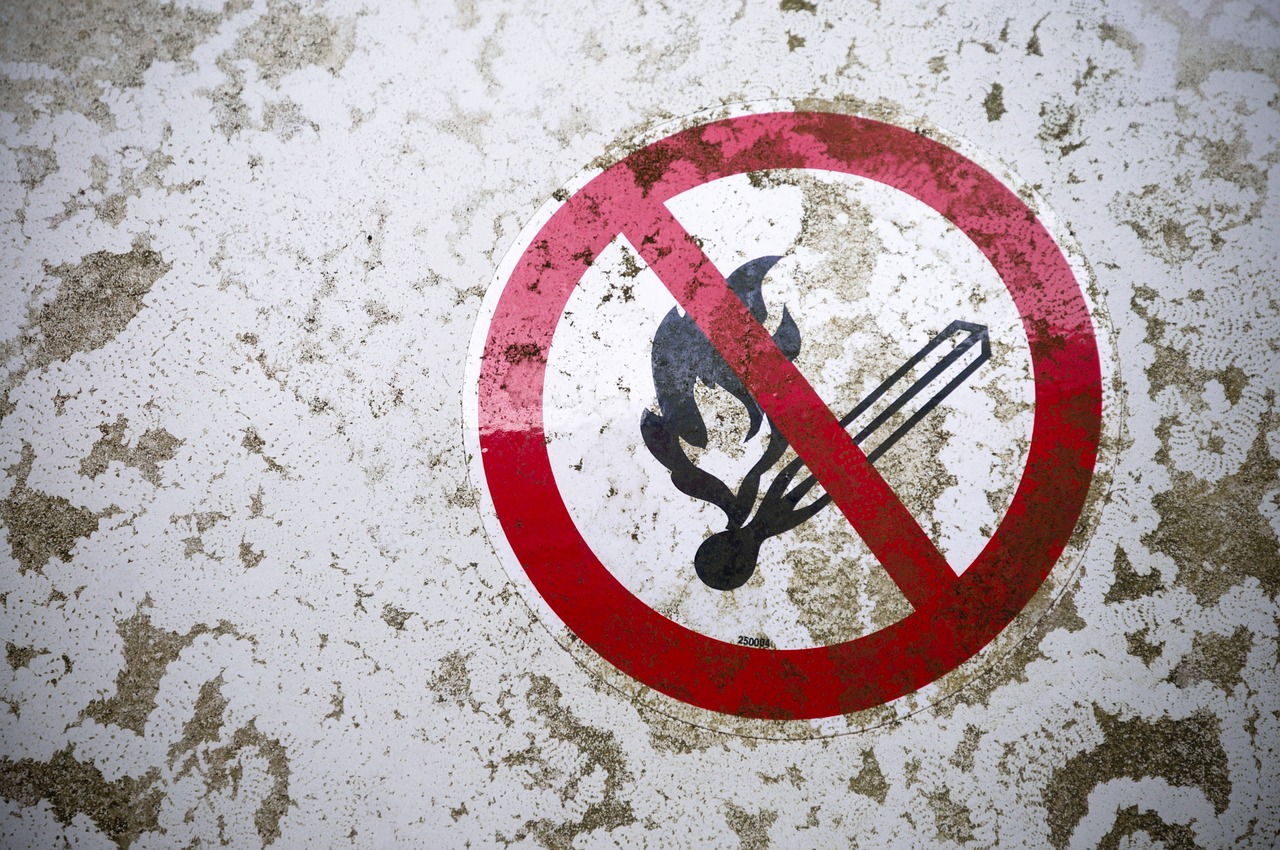
6. Unsecured Furniture
When we think of safety in our homes, we often focus on the obvious hazards like sharp edges or slippery floors. However, one of the sneakiest dangers that can lurk in our living spaces is unsecured furniture. Imagine a bookshelf toppling over during a playful moment or a heavy dresser tipping while a child is trying to reach for a toy. These scenarios can lead to serious injuries, especially for young children and pets who may not be aware of the risks. It's crucial to recognize that furniture stability is not just a matter of aesthetics; it’s a matter of safety.
Unsecured furniture can be a tipping hazard, and the statistics surrounding furniture-related injuries are alarming. According to the Consumer Product Safety Commission (CPSC), thousands of injuries occur each year due to furniture tipping over. The majority of these incidents involve young children, who are naturally curious and often climb on furniture without understanding the potential dangers. To make your home a safer environment, it’s essential to take proactive measures to secure your furniture.
Here are some effective strategies to ensure your furniture remains stable and secure:
- Anchor Heavy Items: Use brackets or straps to anchor tall furniture like bookshelves and dressers to the wall. This simple step can prevent them from tipping over.
- Keep Heavy Items Low: Store heavier items on lower shelves or in lower drawers. This reduces the risk of tipping if someone pulls on an upper shelf.
- Regularly Check Stability: Periodically check your furniture for any signs of instability or wear. Tighten screws and bolts as needed to maintain structural integrity.
Additionally, educating your family about the importance of furniture safety can go a long way. Teach children not to climb on furniture and explain the reasons behind these safety measures. When everyone in the household understands the risks, it fosters a culture of safety that can help prevent accidents.
In summary, unsecured furniture may not seem like a pressing issue, but it can lead to devastating consequences if not addressed. By taking simple yet effective steps to secure your furniture, you can create a safer living environment for your loved ones. Remember, safety is not just about preventing accidents; it’s about fostering a home where everyone can thrive without fear of injury.
Q: What types of furniture should I secure?
A: It’s advisable to secure tall and heavy furniture, such as bookshelves, dressers, cabinets, and entertainment centers, as these are more likely to tip over.
Q: How do I anchor furniture to the wall?
A: You can use furniture anchoring kits, which typically include brackets and screws. These kits are available at most home improvement stores and come with instructions for installation.
Q: Are there any products specifically designed for furniture safety?
A: Yes, there are various products available, including anti-tip straps, wall anchors, and furniture safety brackets designed to prevent tipping.
Q: How can I teach my children about furniture safety?
A: Use simple language to explain the dangers of climbing on furniture. Role-playing and demonstrating safe behavior can also be effective in teaching children about safety.

7. Staircase Safety
Staircases can be one of the most overlooked areas in a home when it comes to safety. Yet, they are also a significant source of accidents, especially for young children and the elderly. Imagine a bustling household where everyone is in a hurry; a single misstep on the stairs can lead to a serious injury. That's why understanding staircase safety is crucial for maintaining a secure living environment.
First off, the importance of handrails cannot be overstated. They should be installed on both sides of the staircase and be sturdy enough to support weight. Handrails provide that extra grip when you’re navigating the stairs, especially if you’re carrying something or if the stairs are slippery. But it’s not just about having handrails; they need to be at the right height and properly secured to ensure they can handle the force of a fall.
Next, let’s talk about lighting. Poorly lit staircases are a recipe for disaster. If you can’t see where you’re stepping, you’re more likely to trip or miss a step. Installing bright lights, or even motion-sensor lights, can greatly enhance visibility. It's also a good idea to keep the area around the stairs free of clutter. Items left on the stairs can easily become tripping hazards, so make it a habit to keep the path clear.
Additionally, consider the design of your staircase. Are the steps uniform in size? Uneven steps can throw off your balance, leading to falls. If you have an older home, you might want to check if the staircase meets modern safety standards. You can even add non-slip treads to each step to provide extra grip, especially in homes where children or elderly individuals reside.
To further enhance your staircase safety, here’s a quick checklist of what to consider:
- Ensure handrails are installed on both sides.
- Maintain adequate lighting around the staircase.
- Keep the stairway free of clutter.
- Check for uniform step sizes.
- Add non-slip treads if necessary.
Lastly, it’s essential to educate everyone in your household about staircase safety. Simple reminders about taking one step at a time and not running on the stairs can make a significant difference. If you have young children, setting rules about stair usage can prevent accidents before they happen. By being proactive and making these small changes, you can create a safer home environment for everyone.
Q: What should I do if my stairs are too steep?
A: If your stairs are excessively steep, consider consulting a professional to assess whether modifications can be made. Adding a staircase runner or installing a stair lift could also be beneficial.
Q: How can I make my stairs safer for children?
A: Install safety gates at the top and bottom of the stairs, use non-slip treads, and teach children about stair safety. Always supervise young children when they are near stairs.
Q: Are there any regulations I should be aware of regarding stair safety?
A: Yes, building codes vary by location, but they often include regulations about the height and depth of steps, handrail requirements, and lighting. It’s a good idea to check with local authorities or a building inspector.
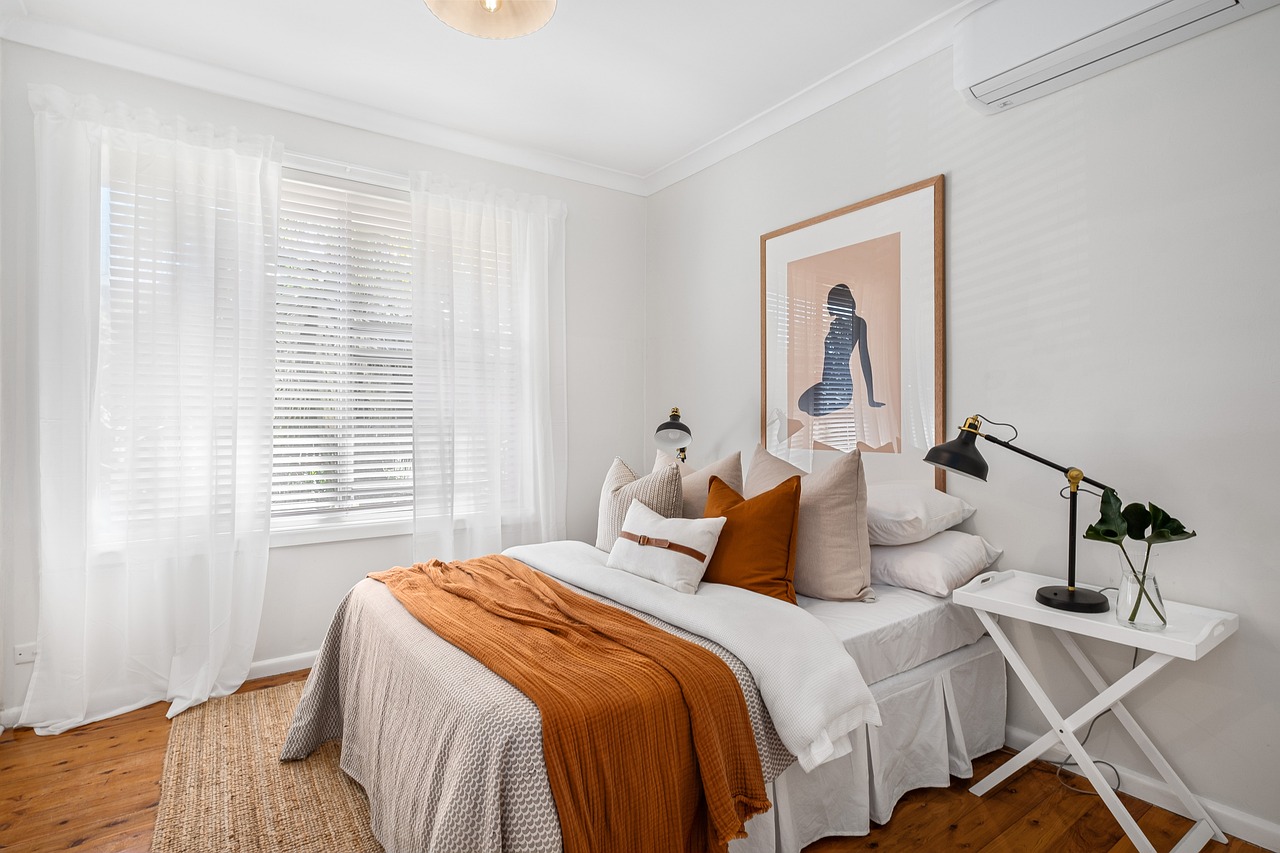
8. Hidden Allergens
When you think of allergens, you might picture pollen floating through the air or pet dander wafting around your living room. However, there are many hidden allergens lurking in your home that can wreak havoc on your health without you even realizing it. These allergens can trigger sneezing, coughing, and even more serious respiratory issues. Understanding what these hidden culprits are and how to combat them is essential for maintaining a healthy home environment.
One of the most common hidden allergens is dust mites. These tiny creatures thrive in warm, humid environments and can be found in bedding, upholstered furniture, and carpets. They feed on dead skin cells, which makes your home a veritable buffet for them. To keep dust mites at bay, consider washing your bedding in hot water weekly and using allergen-proof covers on pillows and mattresses. Vacuuming regularly with a HEPA filter can also help minimize their presence.
Another sneaky allergen is mold, which can grow in damp areas like bathrooms and basements. Mold spores can easily become airborne, leading to respiratory issues when inhaled. To prevent mold growth, ensure proper ventilation in your home, especially in moisture-prone areas. If you notice any signs of mold, such as a musty smell or visible growth, it's crucial to address the issue promptly to avoid further health problems.
Pet dander is another common hidden allergen that many people overlook. Even if you don't have pets, dander can linger in your home from previous owners or visitors. Regularly cleaning your home, using air purifiers, and keeping pets out of certain areas can significantly reduce dander levels. If you're considering getting a pet, it's worth researching hypoallergenic breeds that produce fewer allergens.
Additionally, household cleaning products can also be sources of hidden allergens. Many cleaning supplies contain volatile organic compounds (VOCs) that can irritate your respiratory system. Opting for natural cleaning products or making your own solutions with vinegar and baking soda can help reduce exposure to these harmful chemicals.
To summarize, here are some key strategies to combat hidden allergens in your home:
- Wash bedding regularly in hot water to eliminate dust mites.
- Use HEPA filters in your vacuum and air purifiers.
- Ensure proper ventilation in damp areas to prevent mold growth.
- Regularly clean your home to minimize pet dander and other allergens.
- Choose natural cleaning products to avoid VOCs.
By being proactive and aware of these hidden allergens, you can create a healthier living space for you and your family. Remember, a little effort can go a long way in improving your indoor air quality and overall well-being.
Q: What are the signs of an allergy in my home?
A: Common signs include sneezing, coughing, itchy eyes, and skin rashes. If you notice these symptoms, it may be time to investigate potential allergens.
Q: How can I improve indoor air quality?
A: Regular cleaning, using air purifiers, and ensuring proper ventilation can significantly improve indoor air quality and reduce allergens.
Q: Are there specific plants that can help reduce allergens?
A: Yes! Certain plants, like spider plants and peace lilies, can help purify the air and reduce allergens in your home.

9. Water Damage Risks
This article explores five common hazards that may be lurking in your home, providing insights on how to identify and mitigate these risks to ensure a safer living environment for you and your family.
Toxic mold can grow in damp areas of your home, posing serious health risks. Understanding its causes and symptoms can help you take proactive steps to eliminate and prevent mold growth.
Carbon monoxide is a colorless, odorless gas that can be deadly. Recognizing the sources and symptoms of CO poisoning is crucial for keeping your household safe and ensuring proper ventilation.
Many common household products contain harmful chemicals that can lead to poisoning or respiratory issues. Learning how to safely store and use these products is essential for protecting your family’s health.
Faulty wiring and overloaded circuits can create serious fire risks in your home. Understanding electrical safety and recognizing warning signs can prevent accidents and ensure your home remains safe.
Indoor air pollution can arise from various sources, leading to respiratory issues and allergies. Identifying the causes and improving air quality can enhance your family’s overall health and comfort.
Unstable furniture can pose a tipping hazard, especially for young children. Learning how to properly secure furniture can prevent accidents and injuries in your home.
Staircases can be a significant source of accidents if not properly maintained. Understanding the importance of handrails, lighting, and clear pathways can help reduce the risk of falls.
Dust mites, pet dander, and pollen can accumulate in your home, triggering allergies. Recognizing and addressing these hidden allergens can improve your indoor environment and overall well-being.
Water damage is one of those sneaky problems that can wreak havoc on your home without you even realizing it. It can stem from various sources, such as leaky pipes, overflowing bathtubs, or even heavy rainfall. This damage not only affects the aesthetics of your home but can also lead to serious structural issues and health hazards like mold growth. The key to tackling water damage is early detection and prevention.
To help you understand the potential risks associated with water damage, consider the following common sources:
- Leaking roofs
- Broken or malfunctioning appliances
- Clogged gutters
- Flooding from heavy rains
- Pipe bursts
Understanding the signs of water damage can save you a lot of headaches down the road. Look for:
- Water stains on walls or ceilings
- Peeling paint or wallpaper
- Musty odors
- Warped flooring
- Visible mold growth
Once you identify a problem, it’s crucial to act quickly. Here are some steps you can take to mitigate water damage:
- Identify the source of the water and stop it.
- Remove standing water using pumps or wet vacuums.
- Dry out the affected area using fans and dehumidifiers.
- Inspect for mold and take appropriate measures to remove it.
- Consider consulting a professional for extensive damage.
In addition to these immediate actions, regular maintenance can go a long way in preventing water damage. Check your plumbing systems, inspect your roof, and clean your gutters regularly. By being proactive, you can protect your home and ensure a safe living environment for you and your family.
Q: How can I tell if I have water damage in my home?
A: Look for signs such as water stains, peeling paint, musty odors, and warped flooring. If you notice any of these, it’s essential to investigate further.
Q: What should I do if I find mold after water damage?
A: If you find mold, it’s important to address it immediately. Small areas can often be cleaned with a mixture of water and detergent, but larger infestations may require professional help.
Q: Can I prevent water damage?
A: Yes! Regular maintenance like checking your plumbing, inspecting your roof, and keeping gutters clean can help prevent water damage before it starts.
Frequently Asked Questions
- What are the signs of toxic mold in my home?
Toxic mold can manifest as a musty smell, visible mold growth, or health symptoms like sneezing, coughing, or skin irritation. If you notice any of these signs, it’s crucial to address the issue immediately to protect your family's health.
- How can I prevent carbon monoxide poisoning?
To prevent carbon monoxide poisoning, ensure that all fuel-burning appliances are well-ventilated and regularly serviced. Installing carbon monoxide detectors in your home can also provide an added layer of safety and alert you to any dangerous levels of this gas.
- What household chemicals should I be cautious of?
Common household chemicals that can be hazardous include bleach, ammonia, and certain cleaners. Always read labels, use them in well-ventilated areas, and store them out of reach of children to minimize risks.
- How do I identify electrical hazards in my home?
Look for signs like flickering lights, buzzing sounds from outlets, or scorch marks on plugs. If you notice any of these, it may indicate faulty wiring or overloaded circuits that need immediate attention from a professional.
- What can I do to improve indoor air quality?
To enhance indoor air quality, regularly clean and dust your home, use air purifiers, and ensure proper ventilation. Keeping humidity levels low can also help reduce allergens like mold and dust mites.
- How can I secure unstable furniture?
To prevent tipping hazards, use anti-tip furniture straps or brackets to secure heavy furniture to the wall. This is especially important in homes with young children who may climb on furniture.
- What are the best practices for staircase safety?
Ensure that staircases are well-lit, free of clutter, and equipped with sturdy handrails. Regularly check for loose steps or worn carpeting to prevent accidents and keep everyone safe.
- How can I reduce hidden allergens in my home?
To minimize allergens, regularly vacuum with a HEPA filter, wash bedding in hot water, and consider using an air purifier. Keeping pets groomed and limiting their access to certain areas can also help reduce pet dander.
- What should I do if I suspect water damage?
If you suspect water damage, look for signs like discoloration on walls or ceilings, musty odors, or peeling paint. Address any leaks immediately and consider consulting a professional to assess and repair the damage.



















